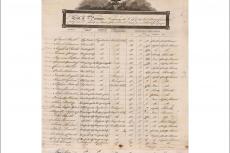The Town of East Hampton has sued East Hampton Village and its liability insurance company over the perfluorinated chemicals stored and used at East Hampton Airport in Wainscott, which contaminated drinking water in that hamlet and caused 47 of the airport’s 570 acres to be included on the New York State Department of Environmental Conservation’s Registry of Inactive Hazardous Waste Disposal sites, or Superfund sites.
At issue are the chemicals known as perfluorooctane sulfonate, or PFOS, and perfluorooctanoic acid, or PFOA, which are used in firefighting foam and were discovered to have contaminated private wells throughout Wainscott in 2017. That discovery led to the Suffolk County Water Authority’s offer of grants for those whose wells were found to be contaminated to install home water treatment systems, and a subsequent extension of public water mains throughout the hamlet. The town board declared a state of emergency, created a water supply district, and offered those connecting to the new water mains the option of repaying private connection line costs as an addition to their property tax bills.
The complaint against the village, “d/b/a East Hampton Fire Department,” and American Alternative Insurance Corporation as an interested party, was filed on April 13 in the United States District Court’s Eastern District of New York by Rigano L.L.C. of Melville, outside counsel for the town.
The town seeks to recover past and future costs associated with “remediating the human health and environmental issues caused by the PFOA/PFOS contamination at and emanating from the Superfund Site” including eliminating contamination at and emanating from the site; the extension of water mains and connection to affected residences; the supply of bottled water to affected residents, and “protecting the public health, safety, welfare, and the environment.”
The town also seeks punitive damages and reimbursement for the costs of litigation, both to be determined at trial.
The complaint also asks that the court order the village to dispose of all aqueous film-forming foam, or A.F.F.F., containing PFOS or PFOA, in its possession; disclose locations where such foam was used and stored within the Superfund site, and investigate and remediate at its insurer’s expense all PFOA and PFOS contamination.
The complaint followed Rigano L.L.C.’s Nov. 12, 2019, notice of intent to sue the village. “More than 90 days have elapsed since plaintiff served” the notice, according to the complaint, “during which time village has failed to commence any action to redress the endangerment referenced in the letter.”
The town owns the land on which the airport, on Daniel’s Hole Road, and the Lawrence Franzone Fire Training Facility, on Industrial Road, are situated, but, the complaint notes, the village owns and operates the Fire Department “which stored and used A.F.F.F. in Wainscott and caused the contamination at issue.” The Fire Department maintains a substation at 72 Industrial Road, land also owned by the town.
The Fire Department stores the firefighting foam in 55-gallon drums at the substation, the complaint alleges, “without a secondary containment system meaning if A.F.F.F. from the drums leaked or a drum cracks, A.F.F.F. would impact the immediately neighboring soil.” The Fire Department has used foam to extinguish fires in Wainscott, including at the airport, and during training exercises at the airport and training facility. The department washed its trucks and equipment in a separate location from where it was used, according to the complaint, releasing residue into the ground.
The complaint further states that the New York State Department of Environmental Conservation requires that the town investigate, under D.E.C. oversight, the contamination at and emanating from the Superfund site; remediate the contamination, and pay the state’s past and future costs associated with the D.E.C.’s Superfund designation.
Becky Hansen, the village administrator, said in an email on Monday that “the village is dismayed that the town has decided to subject the volunteers of our Fire Department and taxpayers to this continued litigation.”
Nicolas Rigano of Rigano L.L.C. also responded by email, saying on Monday that the village “has refused to provide information the town needs to clean up the contamination. Additionally, the village has tens of millions of dollars of applicable insurance. By this lawsuit, the town seeks the information it needs and to have the village’s insurer, as opposed to the town’s taxpayers, fund the New York State required cleanup.”
Mr. Rigano said that it is “troubling that the village and its insurer have forced the Town to litigate, instead of uniting to benefit all residents and the environment.”



